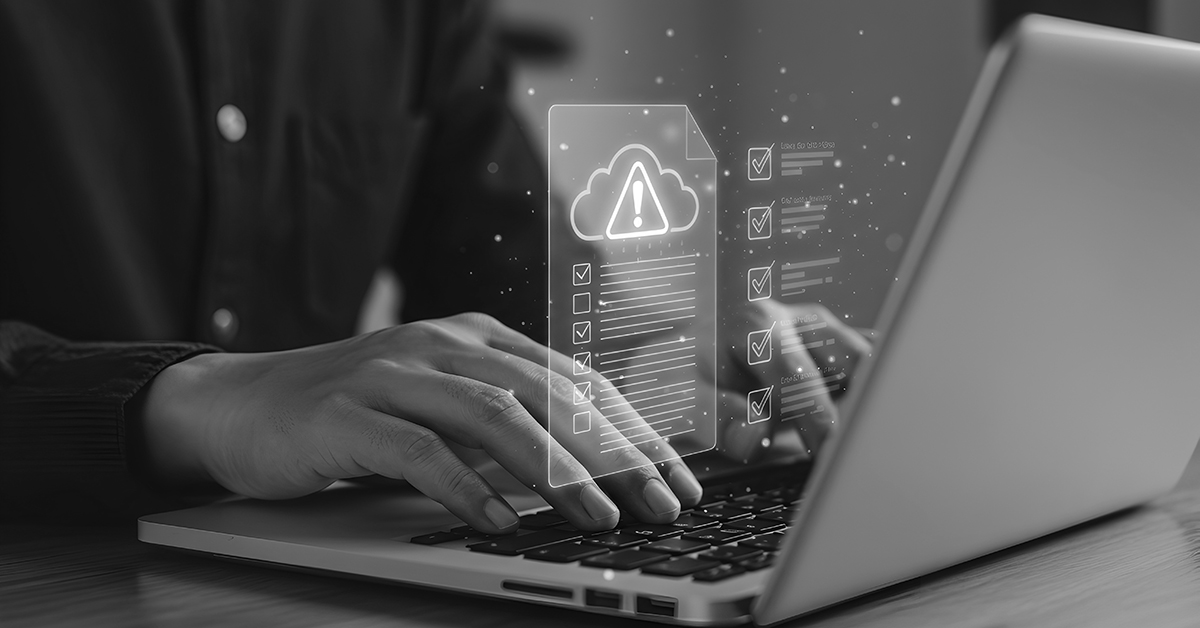The cloud threat landscape in 2025 is marked by speed, scale, and staggering complexity. This year's Top Threats to Cloud Computing Deep Dive 2025 from the CSA reads like a breach compendium: Toyota's misconfigured GitHub repos, the Snowflake supply chain incident, and a ransomware attack linked to CrowdStrike Falcon deployments all illustrate the evolving attack surface and the tremendous pressure security teams are under.
Mounting regulatory scrutiny compounds this. Proactive cloud defense has never been more pressing with frameworks like DORA, HIPAA, and PCI DSS 4.0 tightening expectations for data protection and incident reporting.
To stay ahead, organizations cannot rely on patchwork tooling; they need ongoing monitoring, automated response playbooks, and audit-ready compliance capabilities. Fortra's integrated security stack provides critical visibility and control in this area.
The Need for Continuous Monitoring and Real-Time Detection
Take the Toyota breach. A simple developer oversight led to the public exposure of credentials in a GitHub repository, which malefactors used to get their hands on customer data. According to CSA, this misconfiguration went undetected until after exploitation.
A situation like this demands continuous file and configuration monitoring.
Fortra Integrity and Compliance Monitoring solutions would have flagged the moment those credentials were saved or modified, triggering alerts via SIEM/SOAR integration before the data was exfiltrated. Real-time change detection on configuration files, code repositories, and IAM policies is essential when every minute counts.
These aren't once-off instances, but rather, recurring themes. The CSA report highlights that 66% of unauthorized access incidents stemmed from misconfigurations or exposed credentials. Visibility gaps are the breach enablers of 2025.
These gaps can spread fast in sprawling multi-cloud architectures. Organizations need layered visibility across cloud storage, virtual machines, APIs, and CI/CD pipelines. The perimeter defenses companies once depended on have been rendered obsolete.
Responding to Incidents in the Cloud
The Snowflake-related breach is another example. Threat actors exploited third-party partners to compromise multiple customer environments. This incident painfully illustrated the cascading impact of supply chain exposure and credential reuse and the lack of clear incident response coordination across environments.
Fortra helps contain incidents like this with automated IR playbooks that link straight to your detection tools, moving fast to contain threats and start triage. Logs gather in one place, ready for forensic work when cloud providers, vendors, and customers are all at play. Response flows smoothly across hybrid setups, even when logs, alerts, and actions live in different tools. This keeps the fight tight and the response sharp.
Another instance is the misconfigured deployment of CrowdStrike Falcon's content update that inadvertently triggered system crashes and outages across many Windows systems. While Falcon wasn't directly to blame, the incident spread unchecked due to inadequate alerting and poor response execution.
Here, Fortra's orchestration capabilities can bridge the gap between detection and action. They can trigger immediate IR workflows and enable rapid rollback based on log integrity and behavioral context.
Effective response today can't be a reaction; it must be readiness. That means having IR playbooks pre-configured, roles assigned, and logs preserved before an incident occurs.
Navigating Compliance in Shared Responsibility Models
One of the report's most telling stats is that 41% of those surveyed admitted confusion about their responsibilities in the shared cloud model. Who owns compliance for backup configurations? IAM policies? Third-party integrations?
The Snowflake breach is once again an ideal instance of this. While Snowflake claimed platform-level security was uncompromised, the breach still affected customer environments, begging hard questions about where provider responsibility ends and enterprise responsibility begins.
Here, Fortra helps firms gain clarity and compliance by offering automated compliance mapping against standards like HIPAA, PCI DSS, ISO 27001, and DORA. It also provides audit-ready reports that track user activity, file changes, and system configurations across cloud, hybrid, and SaaS ecosystems. Finally, it features visual shared responsibility modeling to help security teams understand which balls are in their court and which are not.
This kind of transparency is critical. Too many businesses still treat cloud providers as all-risk absorbers when, in fact, the liability often sits squarely with the customer.
Regulatory watchdogs are now emphasizing this point. Under new mandates, it's not enough to say, "Our vendor manages that." Organizations have to demonstrate active governance of their data and systems, regardless of infrastructure ownership.
Purpose-Built Tools for a Fragmented World
Across every incident cited, whether it's misconfiguration (Toyota), supply chain compromise (Snowflake), or deployment gaps (CrowdStrike), the root cause is visibility failure, unclear responsibility, or slow response.
Fortra helps firms gain the clarity and compliance they need with solutions designed for overburdened leaders who need to protect their ecosystem and maintain regulatory compliance. These tools relentlessly monitor for security misconfigurations and indicators of compromise to offer unrivalled visibility.
Security data, both past and present, becomes clear and visible. Compliance scores update without pause, laying bare the business's risk at a glance. Proof of compliance is solid, with policies and reports that hold weight. Control also stretches to third-party assets, with sharp eyes on the odd and the rare, tailored to catch what others miss.
These aren't standalone features, but parts of an integrated security approach tailored for cloud complexity. Fortra's solutions work across hybrid environments, enabling consistency between legacy systems and modern workloads, and bridging the gap between compliance and detection.
Sure, you gain tools by embedding Fortra into your cloud security stack, but more importantly, you gain operational resilience.
From Cloud Security to Cloud Resilience
Cloud risk in 2025 is about stopping attacks, detecting drift, responding fast, and proving compliance. The breaches we've seen in the last year show that traditional perimeter thinking doesn't apply. Misconfigurations, credentials, and third-party exposure are the new battlegrounds.
Fortra helps enterprises move from reactive defense to proactive resilience.
At a time when responsibility is shared but accountability is individual, integrated visibility and governance become business imperatives. With Fortra, security leaders can shift left, detecting missteps before they become incidents, and shift right, by responding confidently when they do.
It's about staying secure, audit-ready, threat-aware, and operationally agile in every possible scenario.
The cloud may be complex. But with the right tools, your defense doesn't have to be.
Compliance Is Not Security, But It's a Start
Mature beyond checkbox compliance. Fortra® helps organizations around the world follow regulatory compliance mandates and align with security frameworks to strengthen their security posture.

